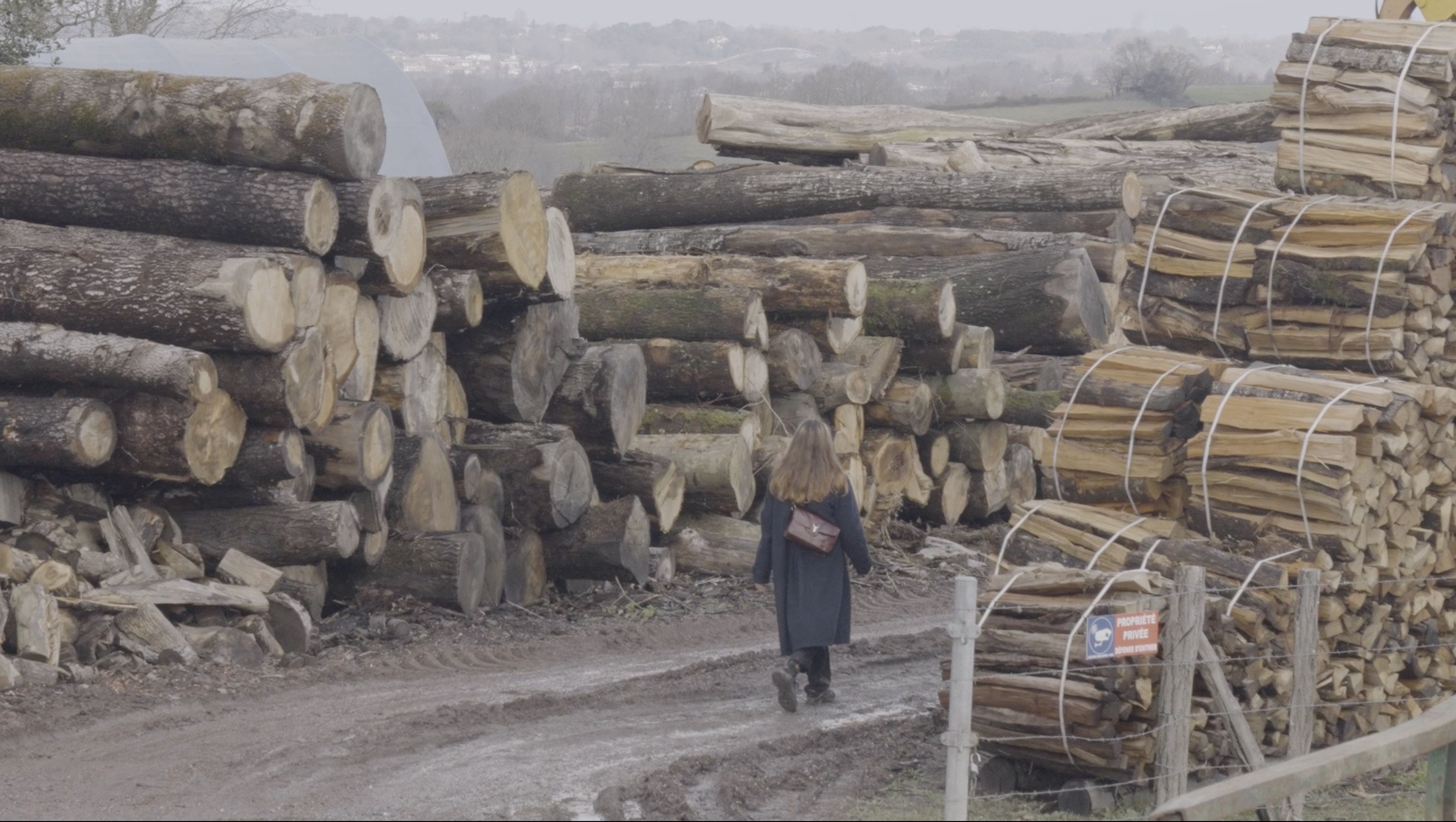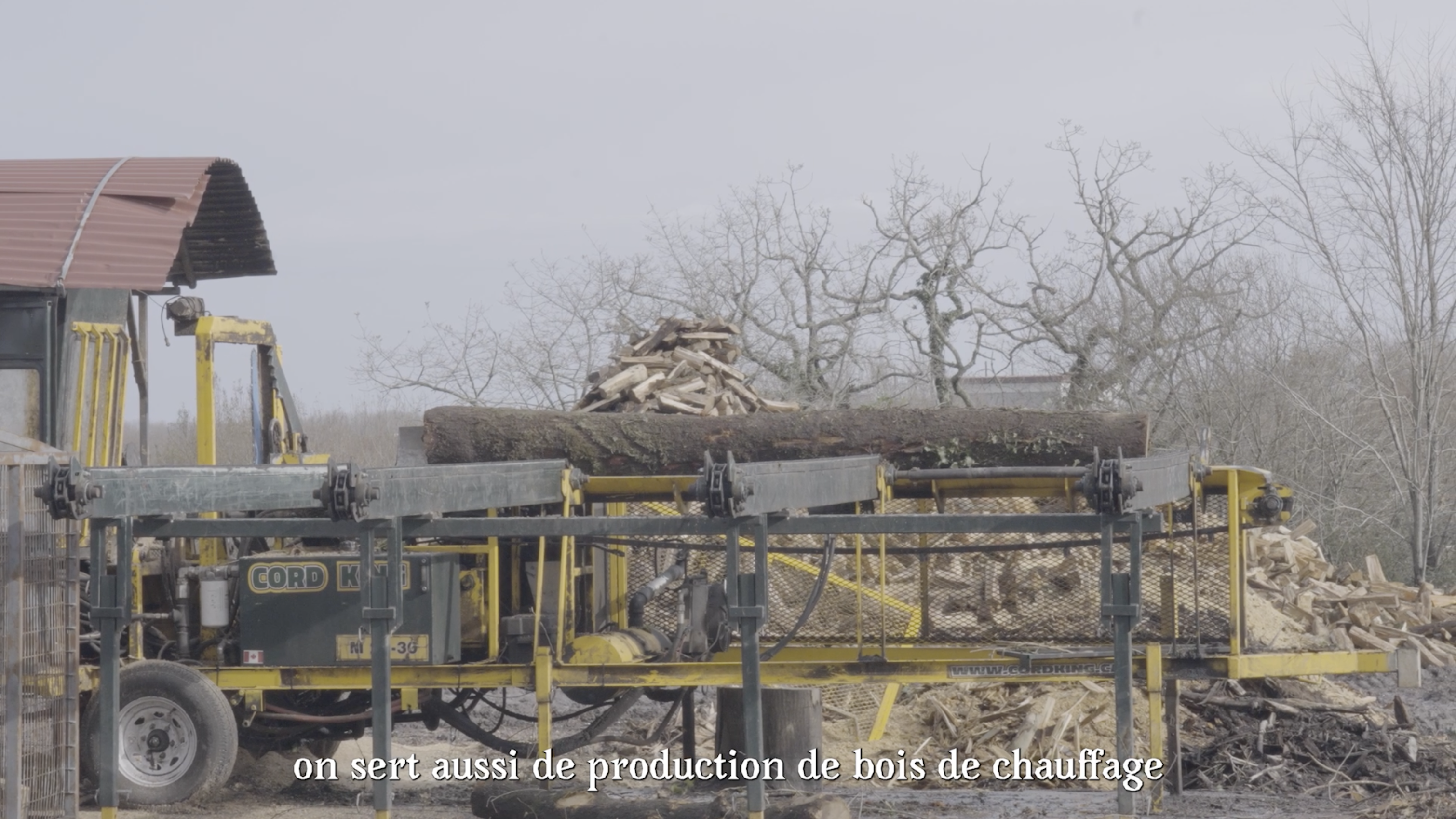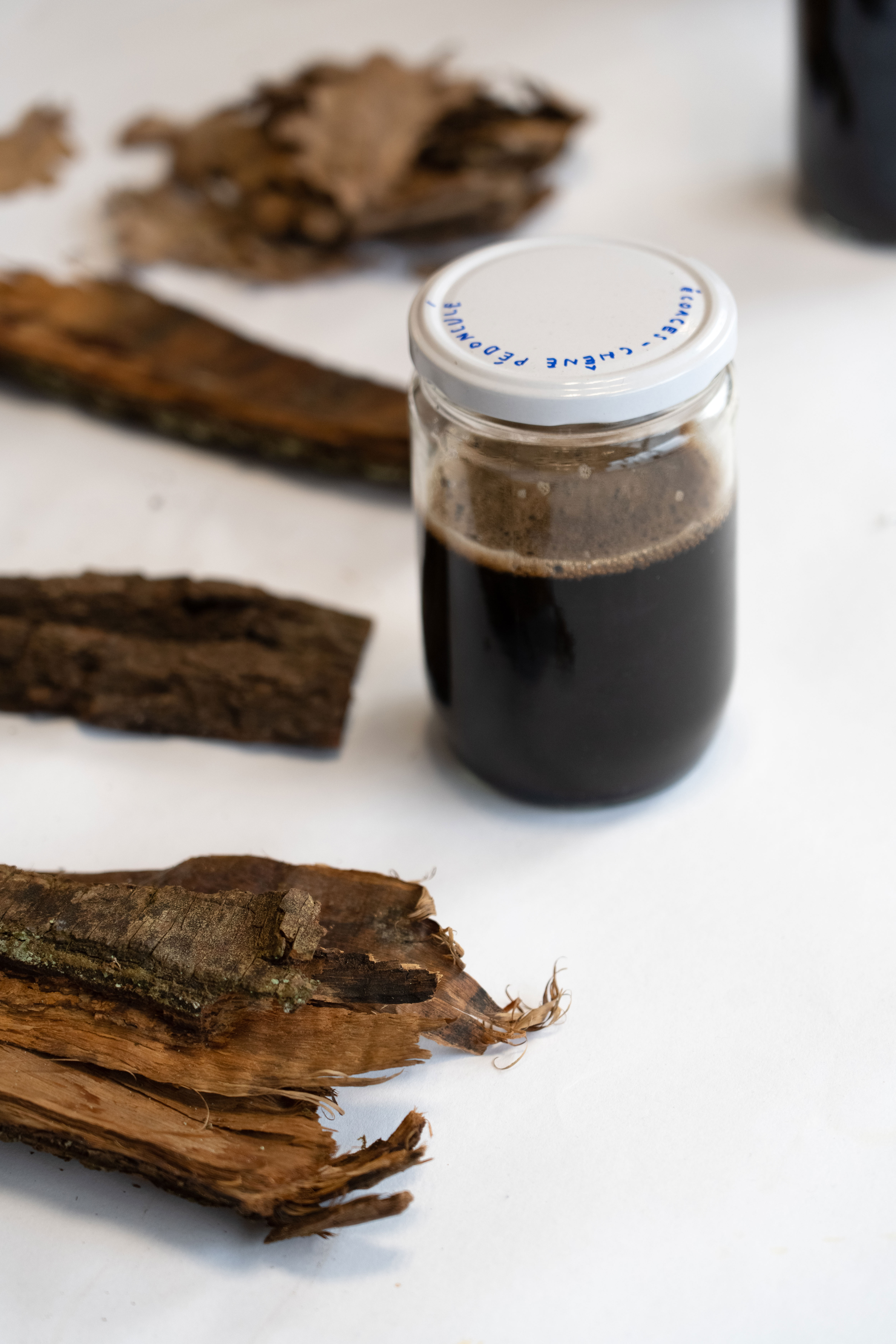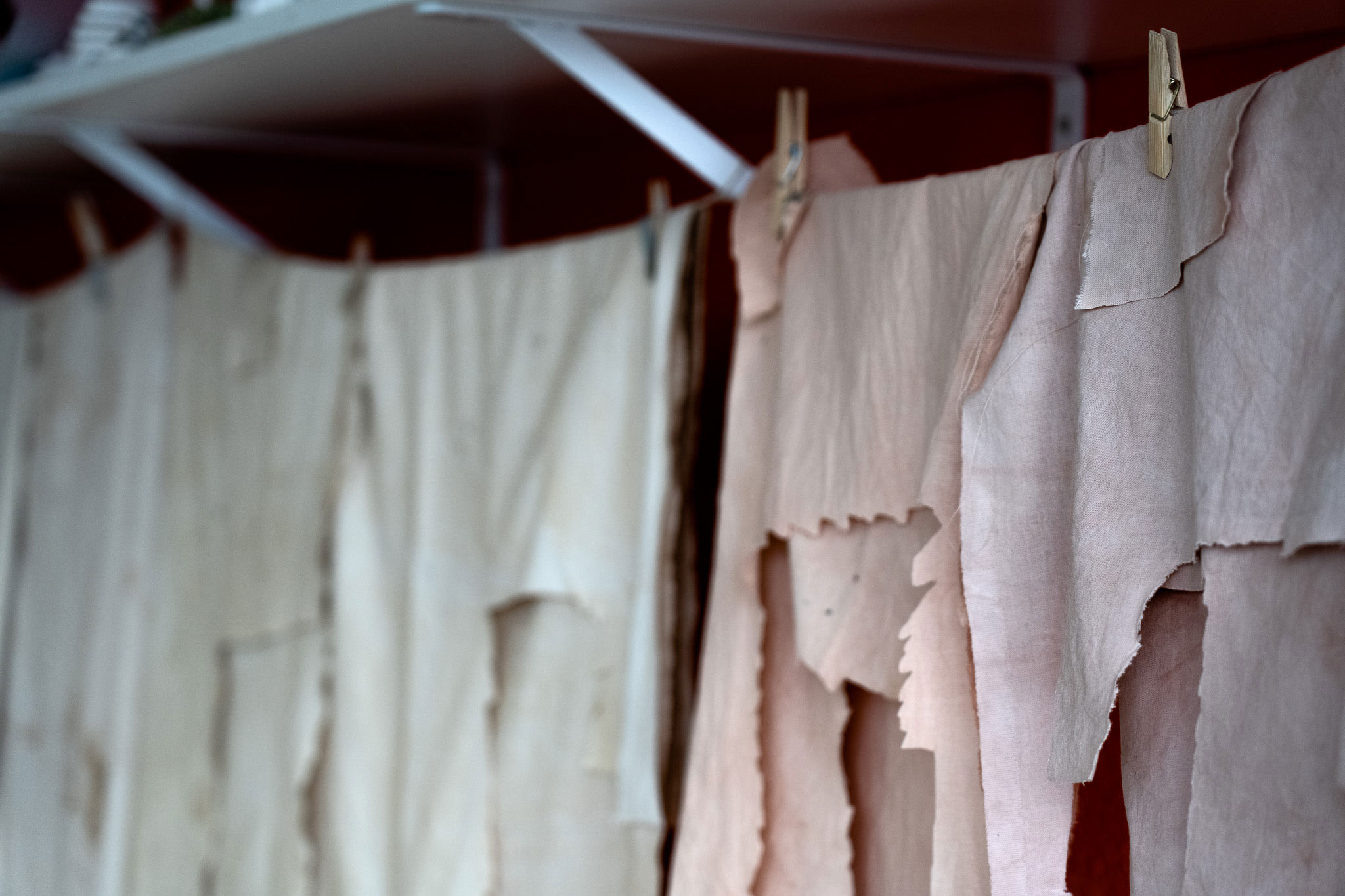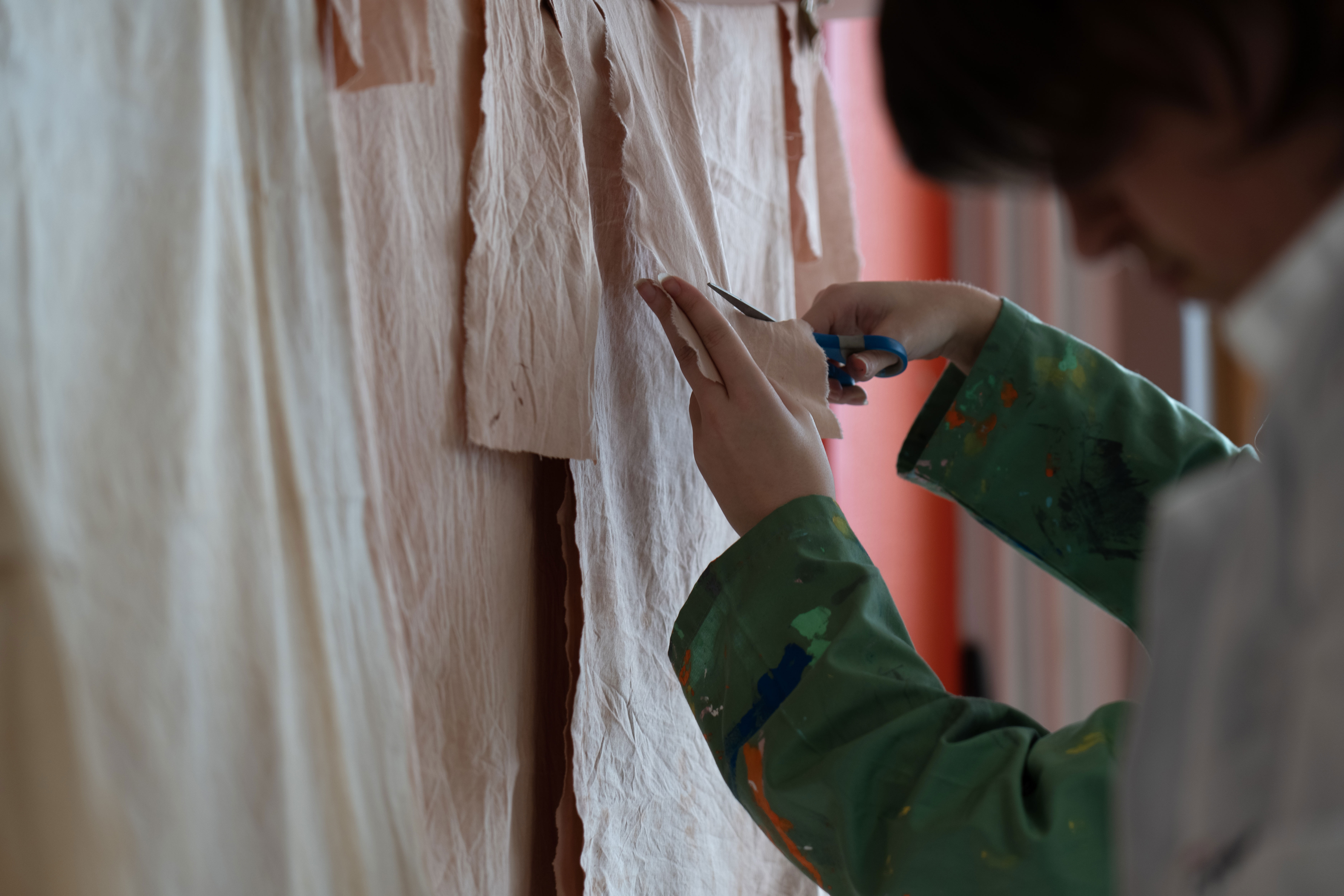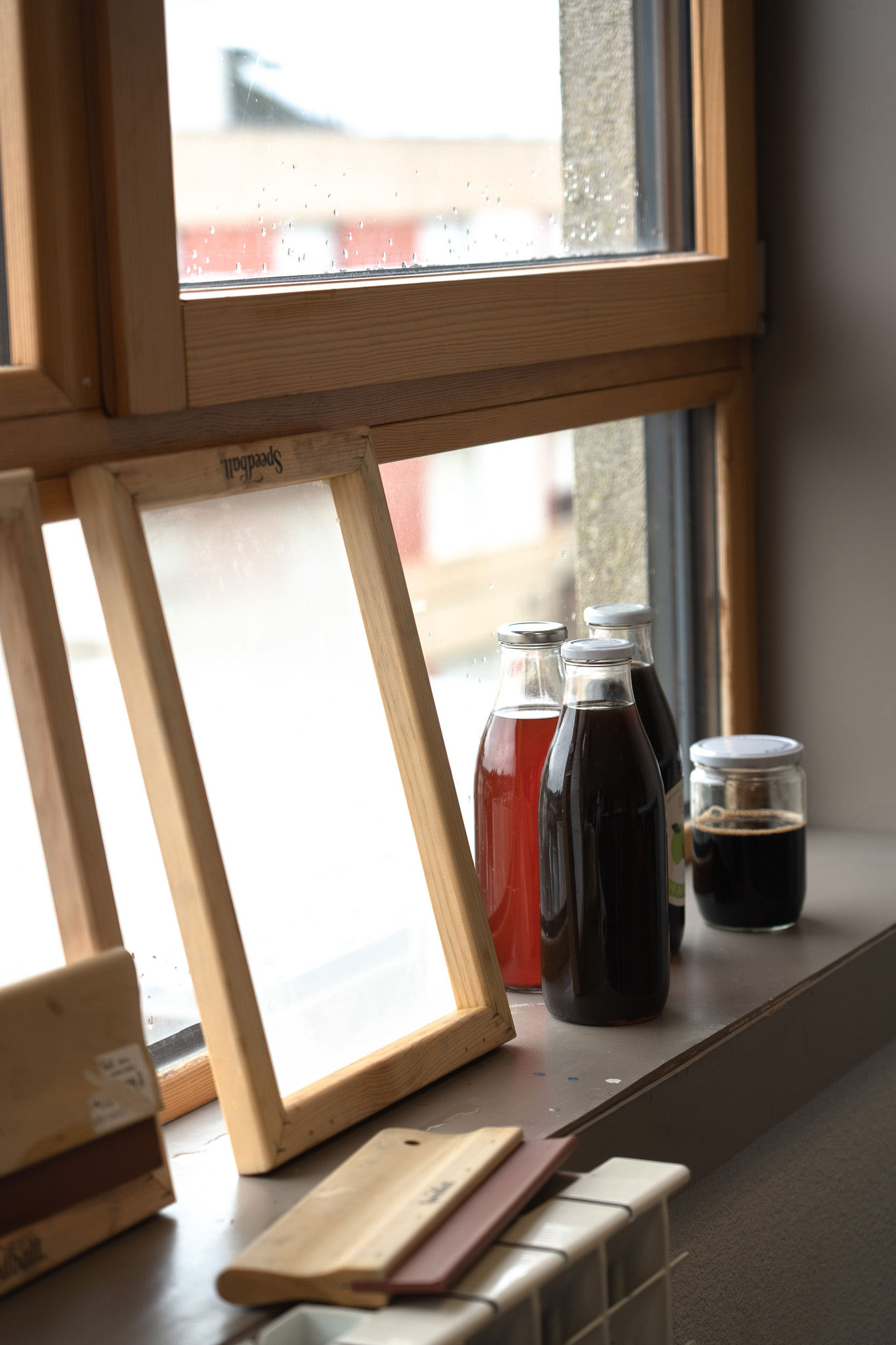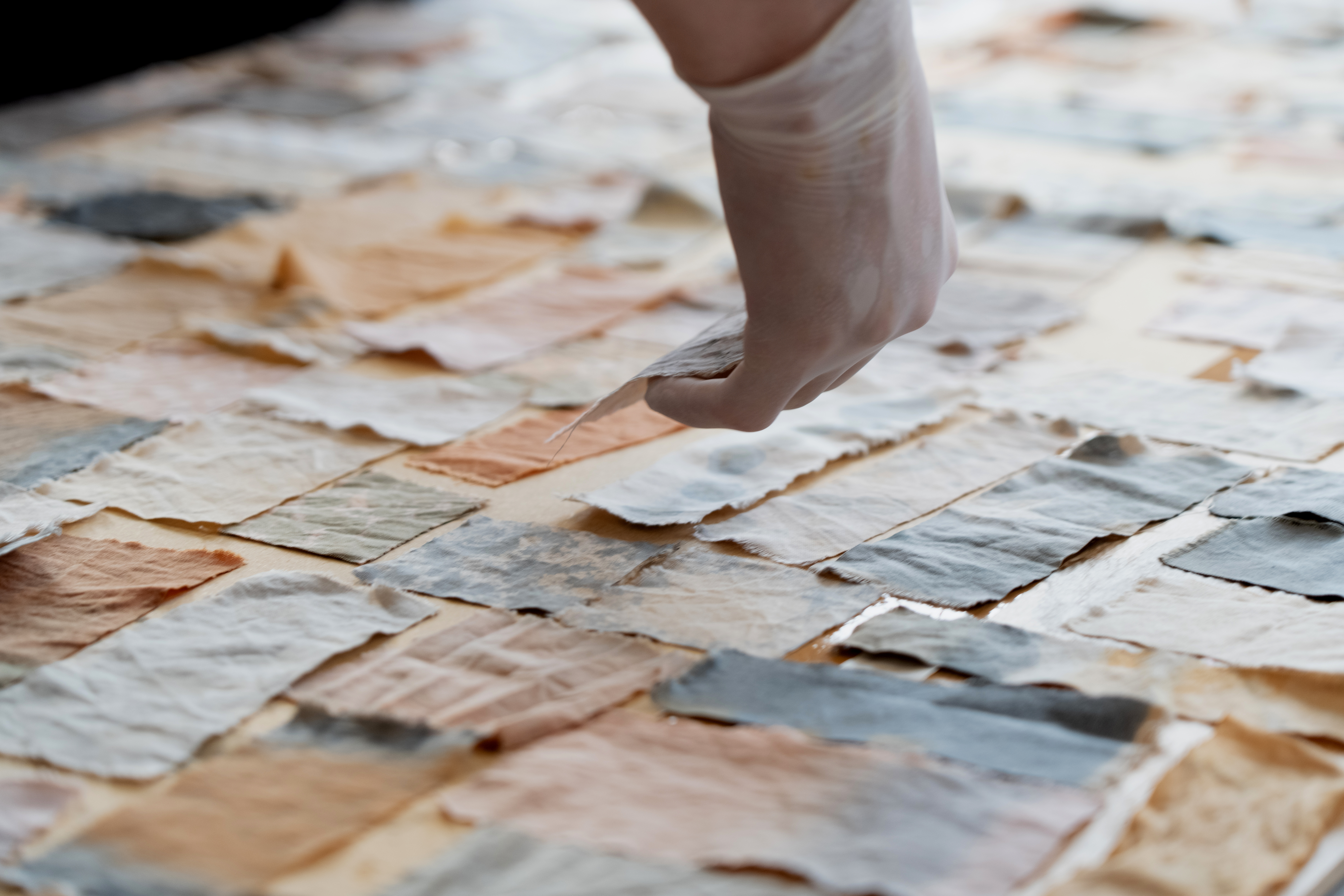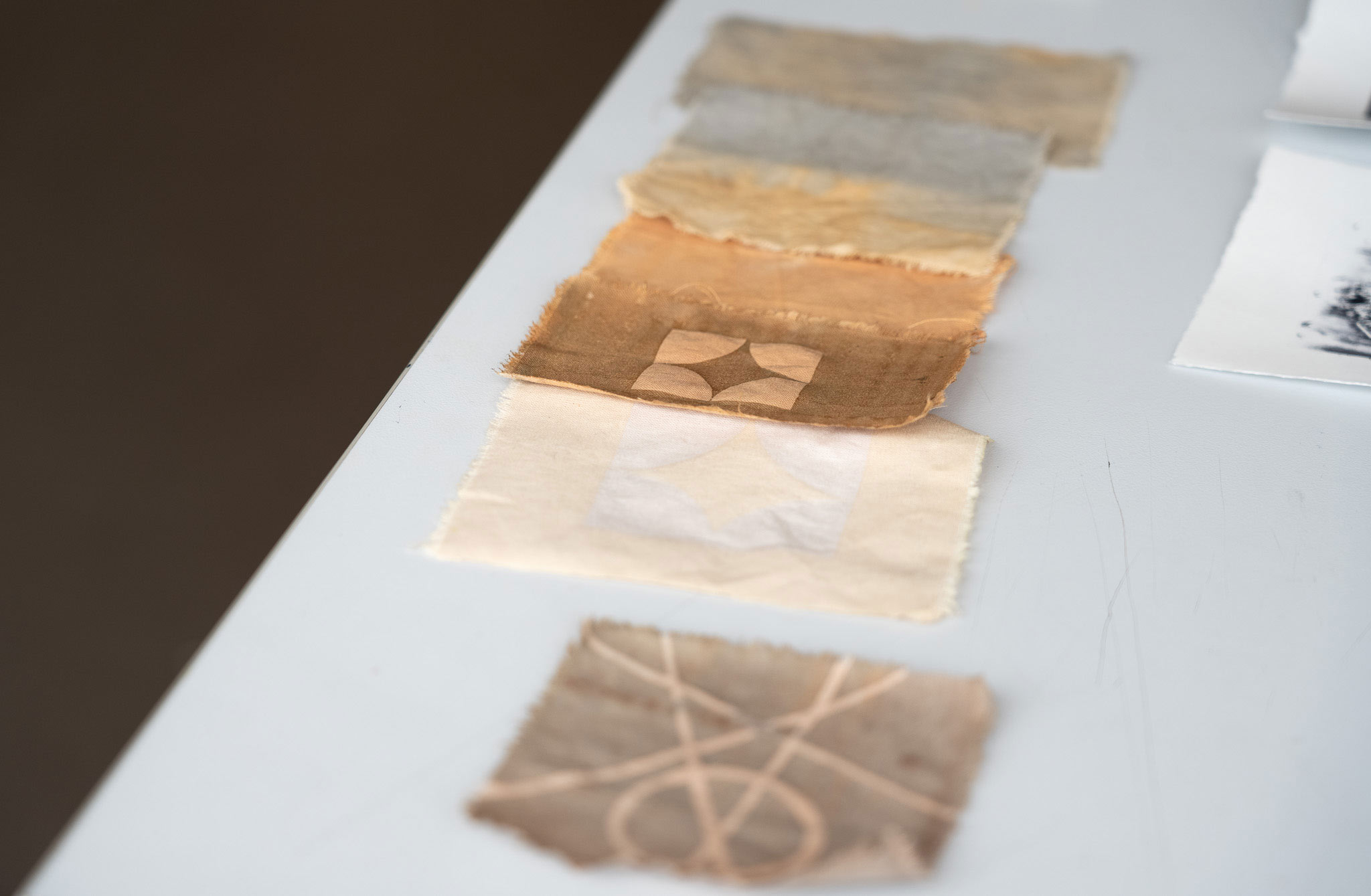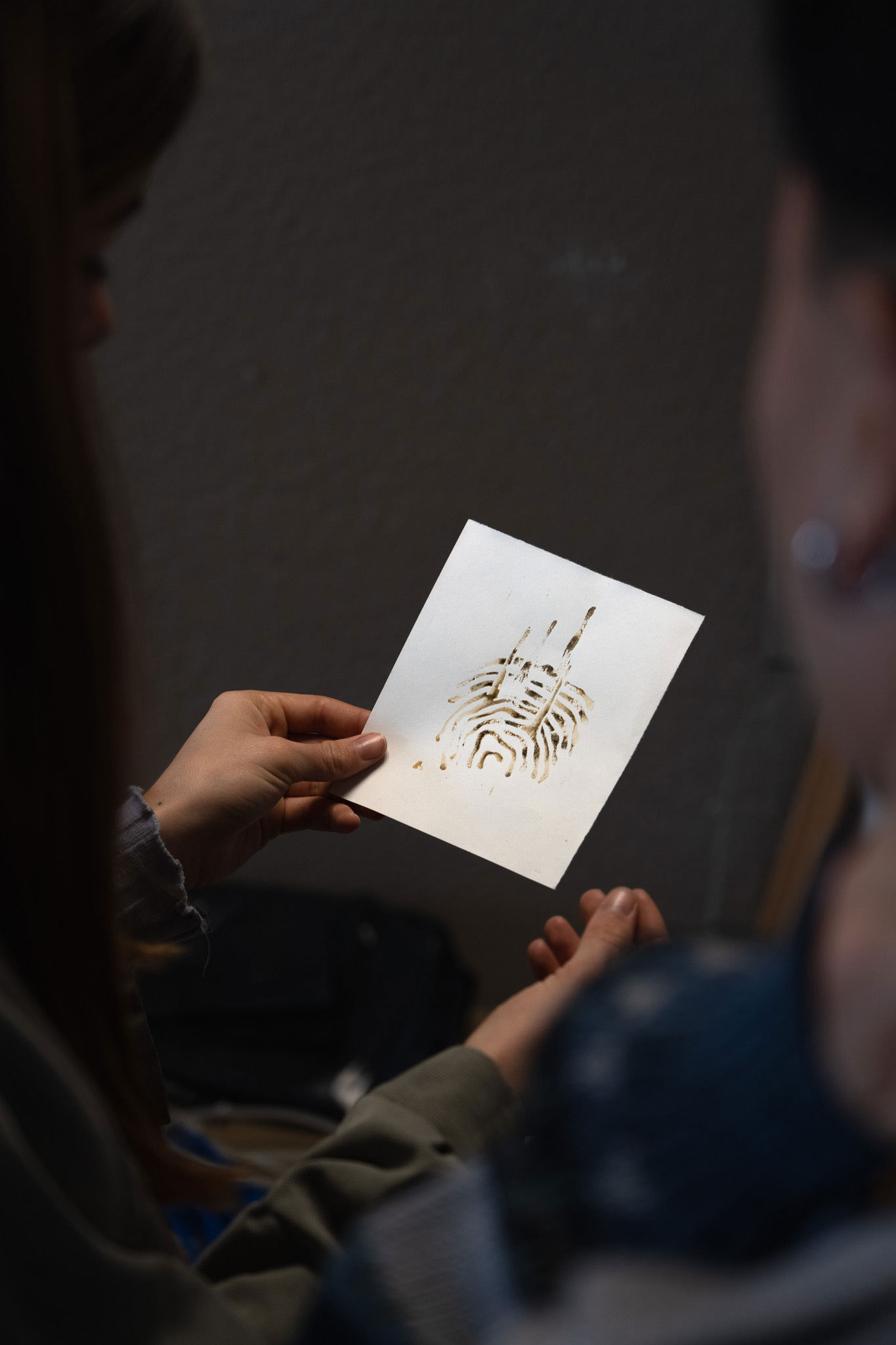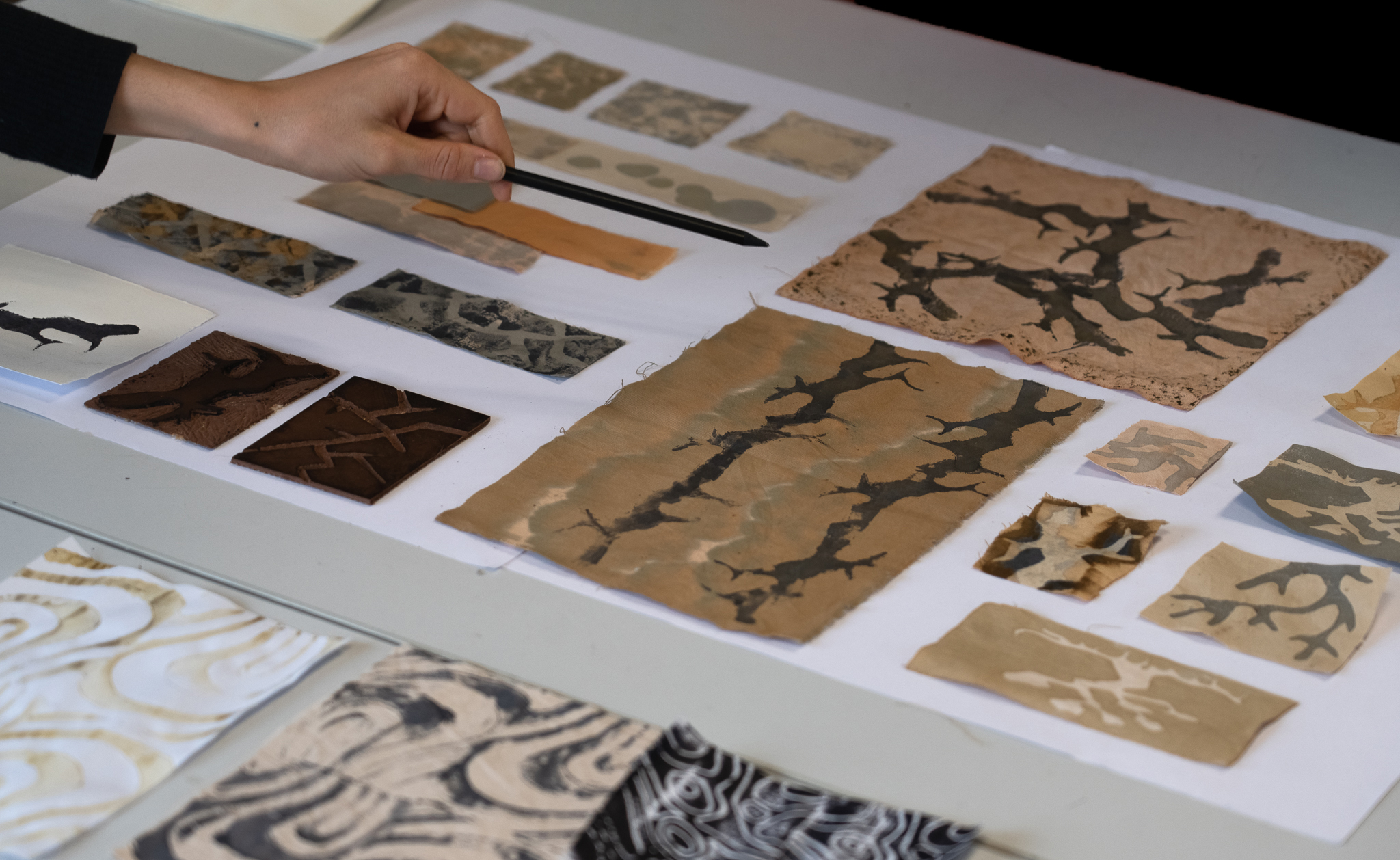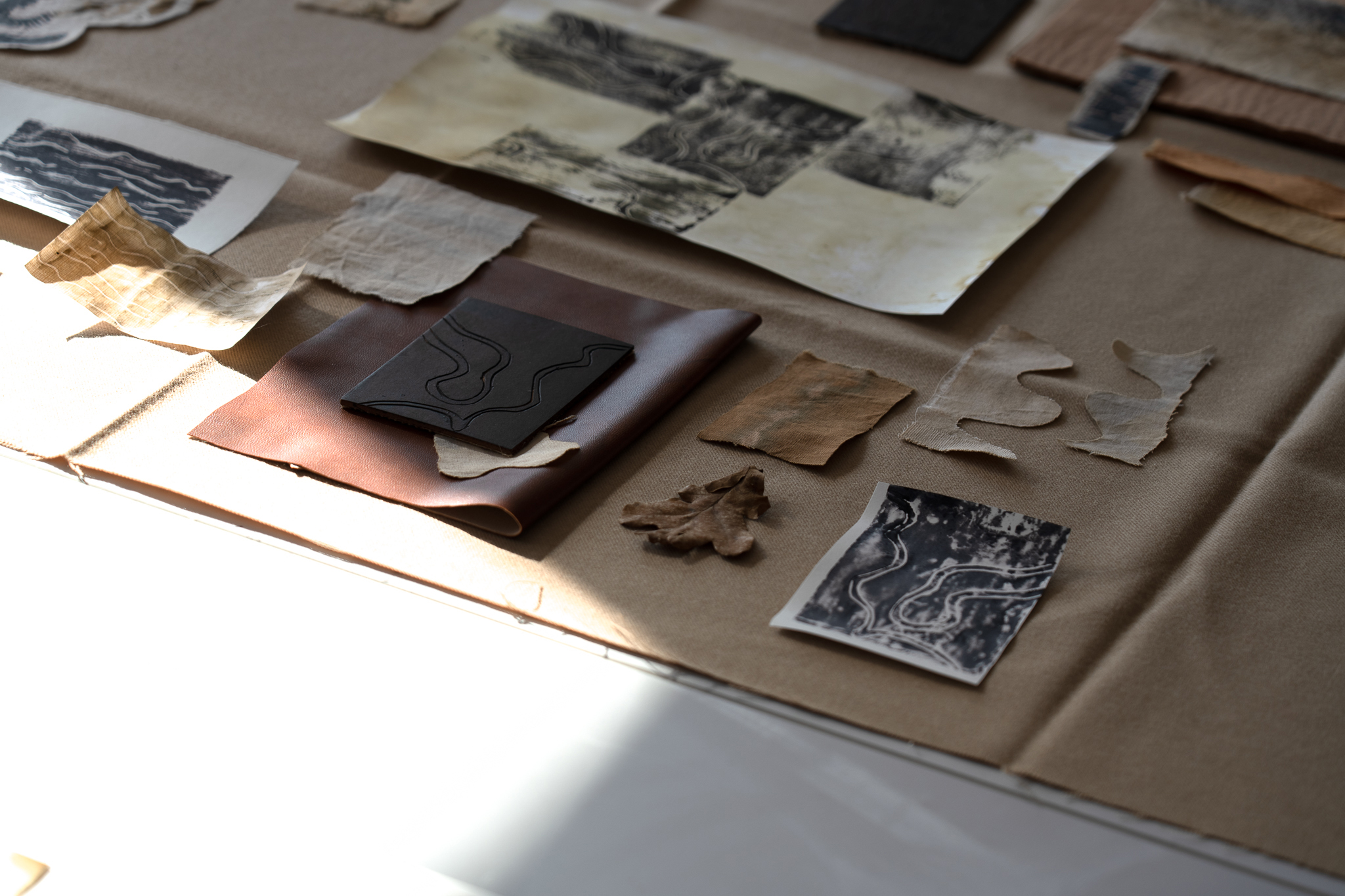Some parts of the tree are unsuitable for these uses, and are therefore ground and compacted in the form of forestry chips used for heating, mulching or animal bedding. The aim of the workshop was therefore to make the most of the specific characteristics of Basque tree bark, which is ground together into forest chips, by revealing the different colors that can be obtained through natural dyeing and printing.
Over a two-week period, the students learned the dyeing and screen-printing techniques developed during my diploma at ENSCI. They were able to make proposals to reuse this forest material, and imagine its applications in the field of design. The proposals for food packaging, signage, brand identity and publishing were all firmly rooted in the Basque region, with a focus on circularity.
Documented by the one and only Grace-Aymone Massianga
